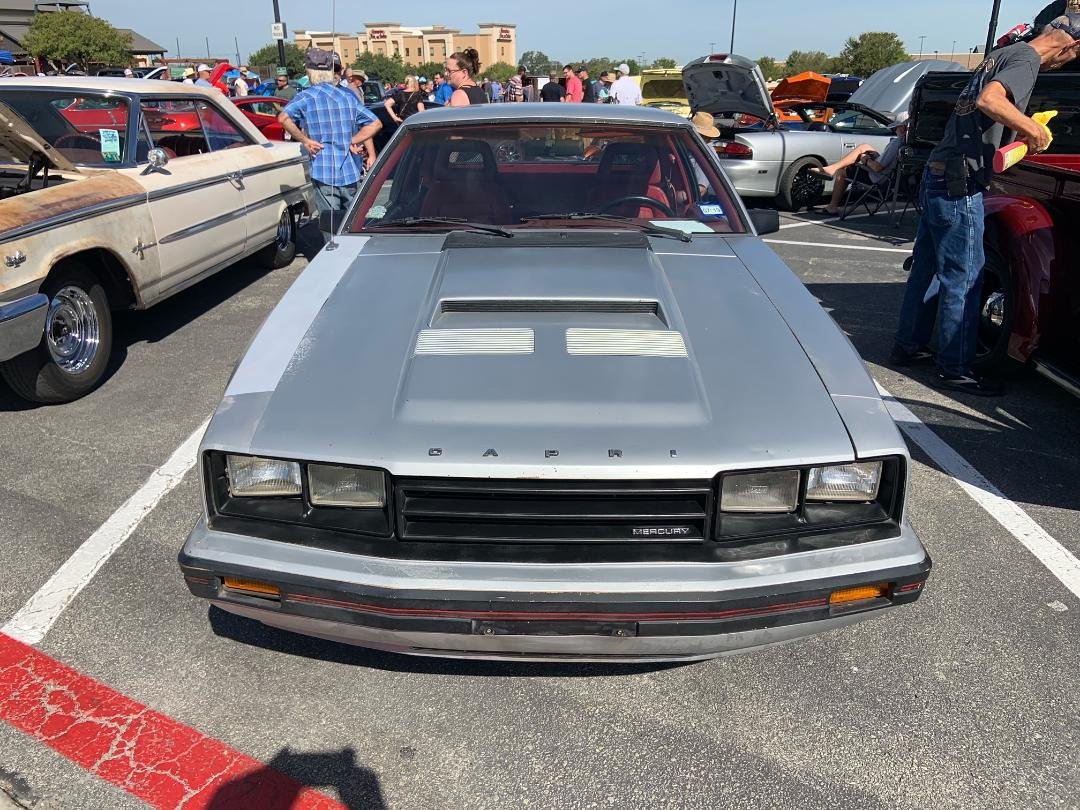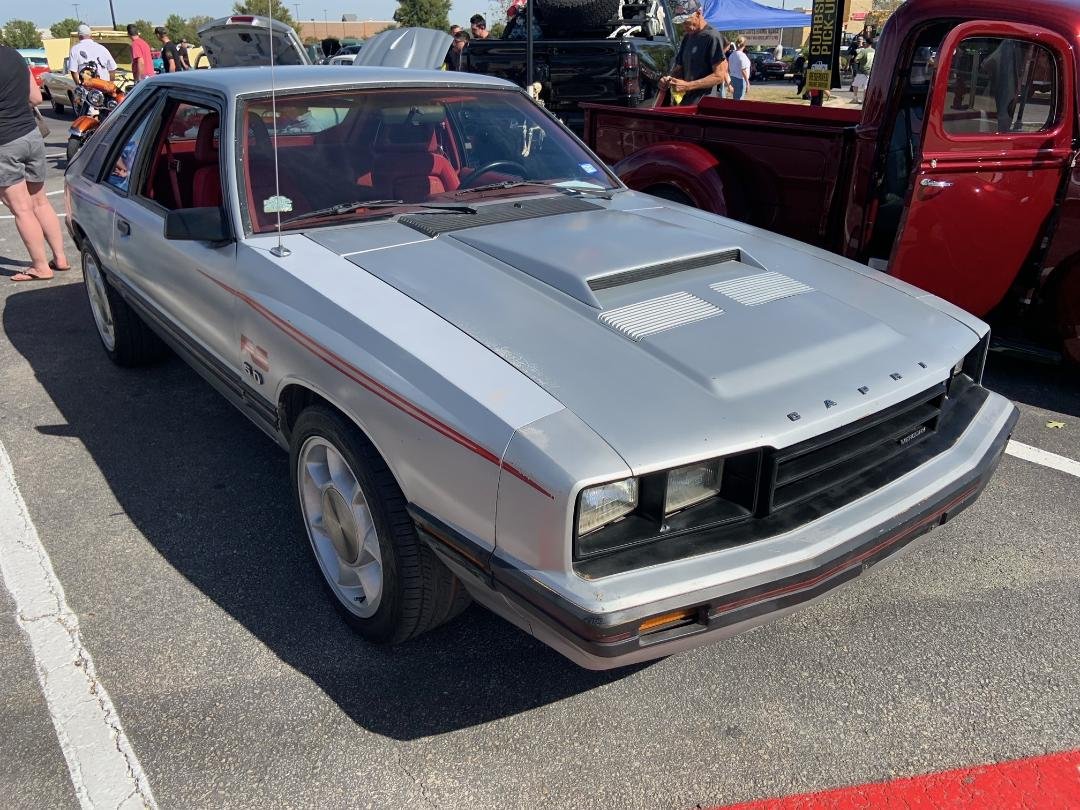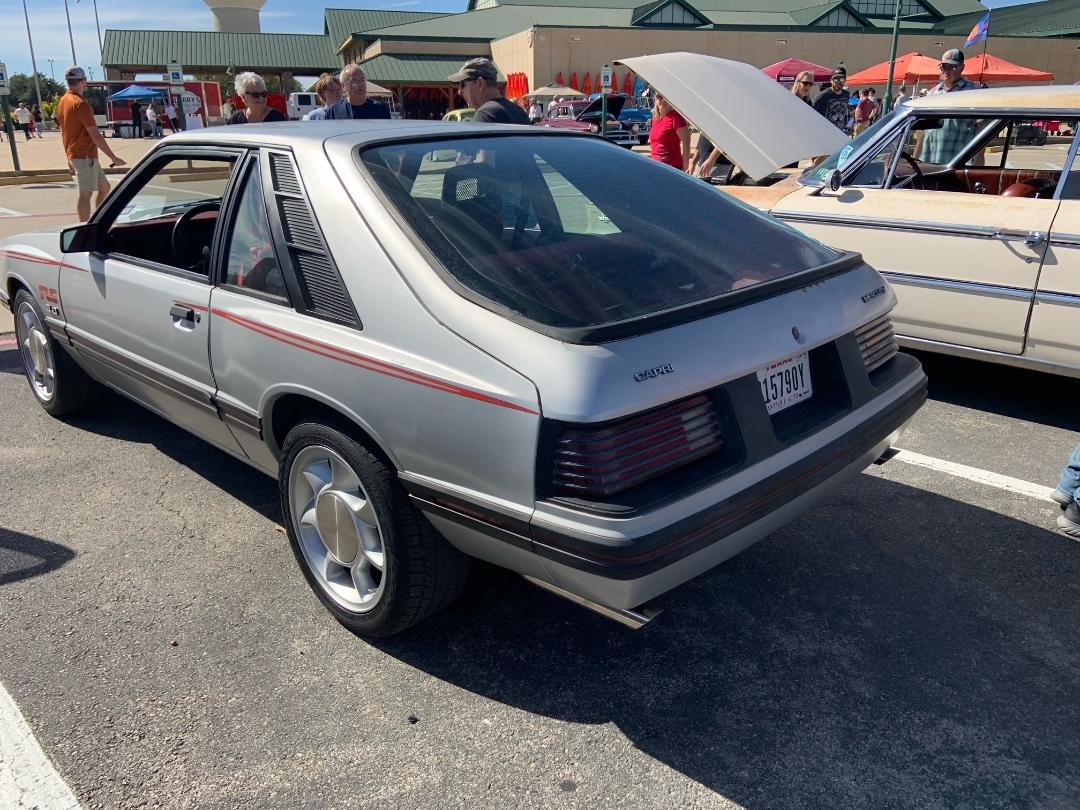The 1983 Mercury Capri featured here, a second generation model, has an interesting evolution. This was Ford Motor Company’s second pony car.
The Story of the Mercury Capri
Prior to 1979, Mercury actually imported the Capri model from Ford’s European operations in Germany. In fact, overseas, Capri’s were built in Australia, South Africa, England, Belgium, and West Germany.
The automobile would be imported to the U.S. and then rebranded. Starting in 1979 Mercury instead badge engineered the quad headlight Fox Mustang into the second-generation Capri. Ford’s Fox Mustangs referred to the Fox Body which Ford named these models because they were built on what was called the Fox Platform. The Fox Platform on the 1979 Mustang had a longer wheelbase and overall length than the prior Mustang II. Ford actually utilized the Fox Platform for several coupes and sedans all the way to 1979.

From 1979 until 1983 there really was no apparent visual difference between the Capri and the Mustang other than taillights and badges. In 1983 the Mercury Capri took on it’s own distinct styling, most of which had to do with the bubble back window. During the second generation the Capri was built only as a three door hatchback. With the Mercury brand being a step up from the Ford brand, the Capri offered the buyer more options along with a more upscale interior.
The Mercury Capri, being very close to a Ford Mustang, saw it’s discontinuance after 1986. This all came about because Ford was seriously getting ready to discontinue the Mustang model at that time.
Mercury Capri Special Edition Models
Three special edition models are the Mercury Capri Black Magic, White Magic, and Crimson Cat.
The Black Magic was an option package on the base model. The Black Magics were filled with delicate bright gold accents along with gold nameplates and striping. Up front the grille bars had a gold edge. The Capri name on the exterior of the car was gold plated, and body side molding had gold striping within them.
The White Magic models were painted in polar white and essentially had the same exterior appointments as the Black Magic models.
The Crimson Cat debuted for the 1983 model year. The special model had gold striping, TRX wheels and crimson red paint along with black sport performance seating with red inserts.
1983 Mercury Capri Specifications
The buyer of a 1983 Mercury Capri had several available engine choices. These included various OHC and OHV engines ranging from 2.3 liters to a 4.2-liter V8.
These included a 140 cubic inch inline four, 231 cubic inch V-8, 301 cubic inch V-8. Horsepower ranged from 90 with the inline six to 177 with the 301 V-8.
Transmissions available were four and five speed manuals and three and four speed automatics.
Brakes are four wheel hydraulic drums with power option.
1983 Mercury Capri dimensions included a 100.4 inch wheelbase, 179.1 inch overall outside length, 59.1 inch height and 69.1 inch width. Curb weight 3,000 lbs with a manual transmission.
Total 1983 Mercury Capri production was 23,375 vehicles. This was down about 30 percent from 1982. Production would drop about 5,000 in 1984. As a whole, the Capri was a success for Mercury in as much as they sold about 2 million units during the models entire production run.
Depending on the model chosen, the 1983 Mercury Capri had a new car price tag averaging about $8,200.
Related Auto Museum Online articles include…
1952 Mercury Monterey Convertible
Reference material includes…55 Years of Mercury : The Complete History of the Big M by John Gunnell..Complete Book of Collectible Cars by the Editors of Consumer Guide..Mercury Gold Portfolio 1947-1966 by R.M. Clarke.
The 1983 Mercury Capri Collector Car
One thing the Fox Body Mercury Capri has going for it is far less of them were produced compared to Ford Mustangs. Auto enthusiasts have also been known to convert these second generation Capri’s into Mustangs. IN fact, during the second generation Mercury Capri the power train was basically identical to the Mustang with V-6’s and V-8’s. With it’s long hood, short deck styling, a Mercury Capri could be equipped like a good looking economy car, an lower priced sports car, or a small personal luxury car.
The 1983 Mercury Capri recent average sales prices appear to be somewhere from $8,000 to $11,000. Selling prices will be determined by a lot of things like condition and mileage. Certainly affordable compared to true high price classics and fun to drive.
(Article and photos copyright Auto Museum Online)

